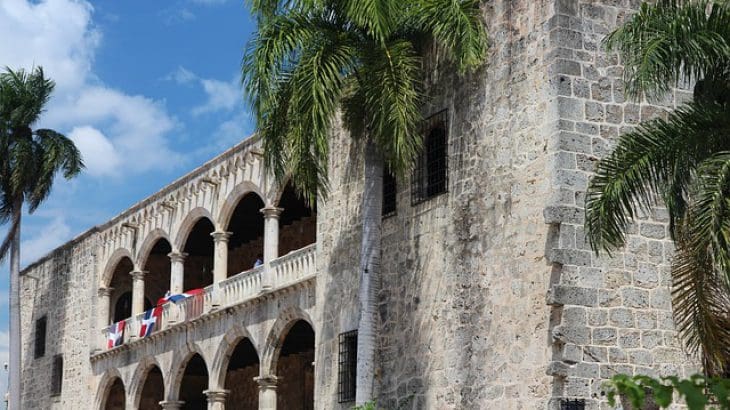With 500 attendees, 100 speakers and three days of panel discussions and workshops, it’s hard to distill CREF 2019 into a few paragraphs. But some critical themes emerged—along with a broad sense that we have the know-how, capital and consensus to get things done. We turned to a handful of CREF participants to gather their key takeaways and their thoughts on the future for renewables in the Caribbean.
1. Renewables the new normal, but structural changes still needed
“Renewable energy is no longer a fossil fuel diversifier,” said Adam Carter, Managing Director, Head of Investment Banking at CIBC FirstCaribbean. “Now the region is embracing it as a competitive energy source, which delivers on other political and socio-economic agendas to address our requirements for higher levels of resiliency, sustainability and energy independence for our island nations. A vision firmly established by our leaders and the CREF community is moving to the next stage—the community must now deliver on these commitments. The Caribbean is poised to transform much sooner than may have been suggested in the past.”
Robert Blenker, CEO of WRB Energy, acknowledged recent success stories but struck a cautious note: “The region is fortunate to have attracted competent and experienced developers capable of delivering quality projects at the lowest possible prices. Capital markets have become comfortable with the region and lenders have developed relevant experience with small project finance. However, it is clear that we continue to struggle with market structural inefficiencies in the form of antiquated regulation, a mismatch between aspirations and reality and operational considerations.”
2. A continued focus on resilience is essential
“For obvious reasons, the region has been very focused on the 2017 storm season and what has been learned as recovery continues, but there are many important lessons from previous storms that we would benefit from revisiting and highlighting as best practices for recovery and mitigation,” said Jennifer DeCesaro, Senior Advisor at the U.S. Department of Energy.
One of those lessons, according to Leroy A.E. Abraham, CEO & General Manager, British Virgin Islands Electricity Corporation, is that “energy resilience cannot be planned in isolation. It must form part of a broader discussion which has to encompass infrastructure resilience, as it would not be practical to make huge investments if the essential services the population is depending on to quickly recover after a major disruption cannot be energized.”
Part of that broader discussion, DeCesaro continued, is “the need for the region to engage more proactively with the private sector, especially in the areas of preparedness. There are innovative ideas regarding how to fund some of the investments in more resilient infrastructure, but they need to be designed in the context of these unique systems. The region also needs to maintain focus and support on long-term recovery efforts (not to be confused with response and restoration), especially in those jurisdictions that do not have access to multilateral or national support. Restoration typically happens fast, but the long-term rebuilding and recovery of the power system takes years.”
3. The economics of renewables make sense—scaling up is the challenge
“Solar energy at scale now dominates least-cost generation in the Caribbean,” said Christopher Burgess, Director of Projects – Islands Energy Program, Rocky Mountain Institute.
“Some of the most exciting aspects of CREF this year were that wind and solar are now at grid parity in terms of pricing (LCOE),” agreed Blenker. “And, the plummeting price of battery storage, combined with the growing operational experiential base suggests we will see some novel approaches to energy in the not-too-distant future.“
However, according to Burgess, scale remains challenging in most countries across the region. “Innovative and aggregated procurement in the built environment of roofs, smaller parcels and parking lots is one way to achieve scale without sacrificing precious agricultural land, open space or critical habitats.”
4. E-Mobility in the Caribbean is more than just a conversation
Turning on e-mobility programs and projects in the region isn’t a binary on-off switch. It’s a multi-stakeholder, multi-year, nuanced commitment. But countries in the region are beginning to come off the fence and make that commitment.
“I was impressed by the advances in e-mobility,” said WRB’s Blenker. “The collaboration between MegaPower and Barbados Light and Power is a model for the region. The technology is maturing. There have been great advances in terms of understanding how e-mobility can enhance grid operations. And, the economics are becoming clear.”
5. Energy storage is a reality in the region
As utilities, homeowners, and C&I customers integrate more and more solar, battery storage becomes critical,” said Burgess. “Thankfully, battery storage is now economical for firming RE and traditional grid services. And best of all it’s proving to be operationally superior to business as usual.”
“Energy storage is not just a concept anymore,” said Stephanie Simons, Mechanical Engineer, Bermuda Electric Light Company Ltd. “Energy storage projects are being deployed to make the output of variable renewable energy less intermittent, grids more resilient and generation more efficient.”
6. Blended finance matters
“There’s no question that blended finance has a role to play in de-risking certain projects in a region like ours where we have had bankability issues,” said Carter. “Blended finance structures not only attract additional capital—including development funding—but more importantly, the structures attract resources and the technical knowledge of special financiers on how to transform a non-bankable project into a successfully financed (and executed) one.”
7. Stakeholder interaction remains critical
“I am increasingly amazed at how this conference has grown and the wide range of attendees from policymakers and utilities, to suppliers and academia, etc,” Abraham said.
But it’s not so much the size of the event, as the way in which participants interact. “CREF provides an opportunity to initiate engagement between stakeholders,” says Jennifer DeCesaro. “The Island Resiliency Action Challenge, for example, has been a great platform for focusing that engagement, giving stakeholders a means to identify solution sets for the complex challenges facing the countries in the region.”
Overall, conversations at CREF underscore “the need to work together as island nations more than ever, sharing ideas, concepts and project lessons learned,” said Simons. Utilities, developers, governments and regulators need to keep talking “to understand the opportunities, as well as to have realistic expectations of the limitations each technology brings.”
https://newenergyevents.com/cref/cref-2019-photos/


